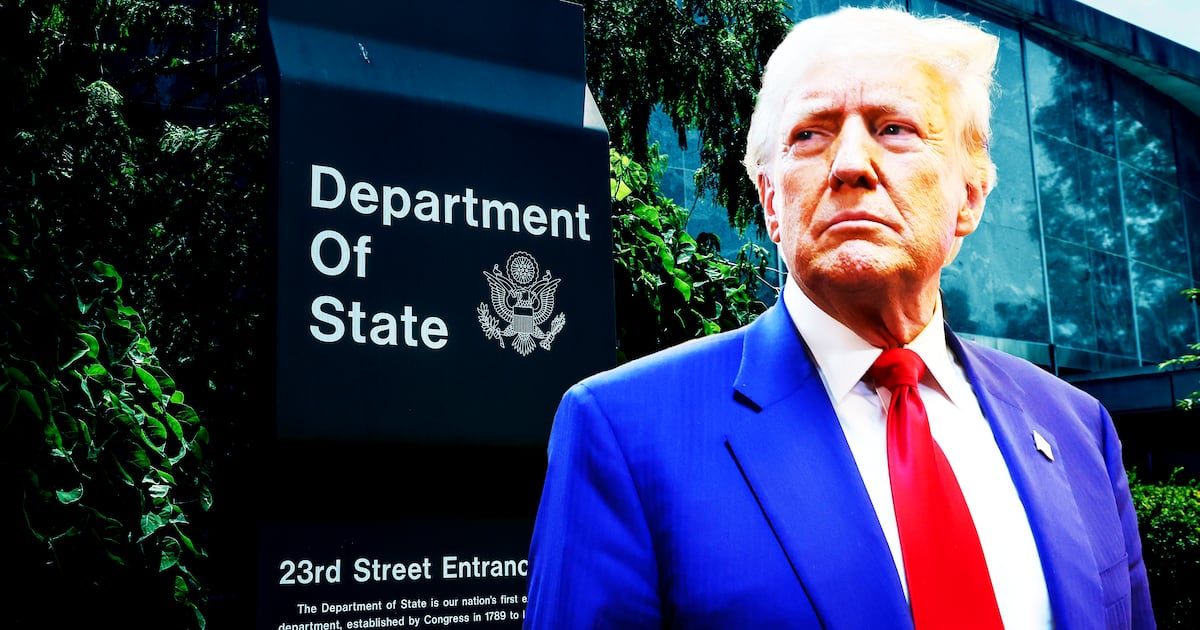
Why are Visa and MasterCard getting off penalty-free in our national credit-card smackdown?
Our pitchforks aren’t pointed in the right place—at the people who spent billions of dollars in marketing over the decades to legitimize profligacy as an American right.
Strangely, the rage propulsion—presidential and populist—that whizzed the credit-card-reform bill through the Senate, and which the House approved on Wednesday, has entirely focused on banks as the guilty perpetrators: Citi, Chase, Bank of America.
Visa and MasterCard were able to create and feed the monster that is drowning consumers today. They plowed billions of dollars into encouraging our crack-cocaine addiction.
Yes, these guys used every trick in the book—and then wrote their own book of manipulation—to Dumpster us up with debt. And then tighten and tighten the usury screws.
But it was largely the two salivating behemoths, Visa and MasterCard, which masterminded this. They were the ones—not the banks—that invented, structured, and funded the credit-card game. Yes, banks issue the cards and set rates. But they do so under a license from Visa and MasterCard, which own these two enormously powerful brands and are canny stewards of them.
They set the rules and standards under which the “issuing banks” operate. And in fact there are a slew of existing policies imposed by Visa and MasterCard, relating to everything from security to fraud protection, that come down from on high. Make no mistake about it. If they wanted to, these global jugular-nauts could have restrained, if not ceased, the mendacious practices that the impending legislation will outlaw.
For example, the new Credit Card Bill of Rates puts restrictions on rate increases, mandates that lenders post credit-card agreements online, and limits the fearsome “universal default” practice, which scarily allows lenders to jack up interest rates on an existing balance if the customer is late in paying unrelated bills.
Visa and MasterCard could have halted these practices by making them part of their license agreements with the banks. Saying, in effect: “Your scummy predatory practices injure naïve consumers and will damage our brand in the end.”
Instead, they were complicit in the plastic pillage that generated a fortune in fees from the member banks and their execs. Last year, Joseph W. Saunders, the CEO of Visa, made more than $10 million in total compensation; Robert Selander, his counterpart at MasterCard, pulled down more than $11 million.
Because of the symbiotic financial relationship between themselves and the banks, Visa and MasterCard were able to create and feed the monster that is drowning consumers today. They plowed billions of dollars into encouraging our crack-cocaine addiction—between 2007 and 2008 Visa spent $916 million and MasterCard plunked down $714 million in advertising—and that doesn’t even include their massive promotion and event-marketing budgets.
Is there any wonder there are 1.5 billion cards in America and that the average debt of households with credit cards is more than $10,000? Their ads have been fiendishly clever, constructing a culture of borrowing that made credit cards a required badge of winning in the consumer Olympics, creating a pandemic of acquisition.
In fact, MasterCard’s “Priceless” campaign and its incantatory trinity—resolving in the epiphanic “Priceless”—became a cultural meme and a much-parodied marketing classic. Its insidious mantra presented an emotionally struck world where some things were always more important than money. But in MasterCard’s world of 25 percent interest, a world where their profit exceeded $1 billion last year, there was absolutely nothing more important.
Visa, MasterCard, and the banks evolved into an irresistible one-two punch. With national TV driving the emotional message, the banks closed the sale by stuffing our mailboxes with millions of come-on direct-mail pitches.
In truth, the bedfellowness of the banks and the VisaCard-Industrial Complex goes straight back to the industry’s founding. Both Visa and MasterCard were originally cooperatives, membership organizations. Each of them was actually owned by more than 25,000 member banks, and one hand washed the grubby hand of the other.
Then they changed their status and went public—first MasterCard in 2006, and then Visa in 2008. Those IPOs and Wall Street’s relentless earnings demands made the continued overmarketing of credit products a structural necessity. If ever there was a time when brakes could have been put on the issuing banks, it had vanished.
To be fair, though, we need to extend the accountability beyond Visa, MasterCard, and the banks. Mature societies don’t compress blame, however appealing that may be. They assign it fairly, even when it hurts.
Which means we can’t forget consumers themselves. The calculating machinery may have tempted us with the siren song of the 50-inch plasma TV (today’s favored techno-trope), but we were the ones who yanked out our cards. How many times in our lives were we reminded to read the fine print? How little did it matter? The same people who’ve been trained to look underneath a box of strawberries for the bruised babies just signed and spent.
And what about the 84 percent of undergraduates who’ve got a credit card, consigning themselves to a post-graduation future that now includes credit-card debt, tuition loans, and a paper fast-food apron? You really don’t need a perfect math SAT score to protect yourself from a direct-mail copywriter.
We are entering into a new regulatory landscape, largely because of bloodied billion-dollar institutions like Wells Fargo, Merrill, and Bank of America—and the undeservingly un-bloodied Visa and MasterCard.
We need them to recognize their culpability. And to start acting like responsible companies and use their power to rein in the issuing banks. Even the new legislation will have loopholes that must be resisted.
Personal responsibility is our only real defense against free-market berserkitude. When our self-control is overtaken by something more primitive, government will step through one door. Then other door-crossing will follow. Irresponsibility breeds overreaction.
This regulatory fallout will soon spread to other categories. And there will inevitably come a time when the same people who are rejoicing at government intervention in the credit-card industry will be mounting the barricades because government has decided to snoop around in, or regulate, some other area of activity they want to remain wide open.
In the end, it’s all a matter of whose ox is being gored. Or regulated, because there’s a Federal Oxen Evaluation Act around the corner.
Adam Hanft is a decoder of the consumer culture and our branded planet. He blogs for The Huffington Post and FastCompany.com. He is also the co-author of Dictionary of the Future and is founder and CEO of the marketing and branding firm Hanft Raboy. Follow him at Twitter.com/hanft.






